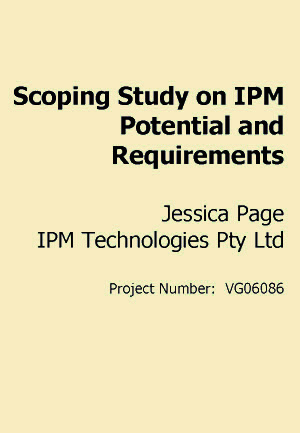|
|
IPM has been a priority area for many horticultural industries and funding from HAL has been directed towards IPM. However, in most horticultural industries there has not been great adoption or implementation of IPM despite this funding support, and we need to know why, and what is needed to improve adoption of IPM. To achieve this end, HAL commissioned this survey of both growers and advisors to help to determine who is adopting IPM and why. Also, who is not adopting IPM and why not, and for advisors, what are the reasons influencing adoption. This report provides the results of a survey of vegetable growers and advisors into adoption, and non-adoption of IPM. It describes the levels of adoption, reasons for non-adoption by growers and discusses the requirements for improved adoption of IPM.
Findings : A questionnaire was sent to growers and advisors in all States. The response rate varied between states from 11% to 23% (WA 11%, Tas 13%, NSW 16%, Vic 18%, SA 23%). The number saying that they currently use IPM was 49% but the figure varied massively between states (Tas 22%, Vic 68%, SA 31%, NSW 64%, WA 68%). When the responses were analysed further it is more likely that only about 28% are actually using IPM well. However, a very high percentage (80%) of those who had previously used IPM continued to use IPM. One of the main factors contributing to non-adoption of IPM was the fact that current pesticide approaches still worked. It is not the case that growers or their advisors believe that IPM is too expensive, too complicated or that there are not enough selective chemicals. That is, there is little motivation to change to using IPM. Local demonstrations of IPM and contact with advisors specializing in IPM were seen as desirable by most respondents. The results indicate that there is good awareness of IPM but the benefits and practicality of IPM need to be demonstrated before this group will change. The vegetable industry and HAL need to have a clearly communicated and accepted definition of IPM to avoid problems of different expectations and also to avoid poor results where IPM was not used correctly. Offering growers information first-hand by crop advisors who can give simple and clear advice is the best means of maintaining and improving IPM implementation. Acknowledgments : This study was funded by Horticulture Australia Limited and AusVeg. We thank the Vegetable Industry Development Officers in each state who distributed the survey, and to all those who took the time to respond. We also thank Janet Horne for comments on this report. |
||||
|

